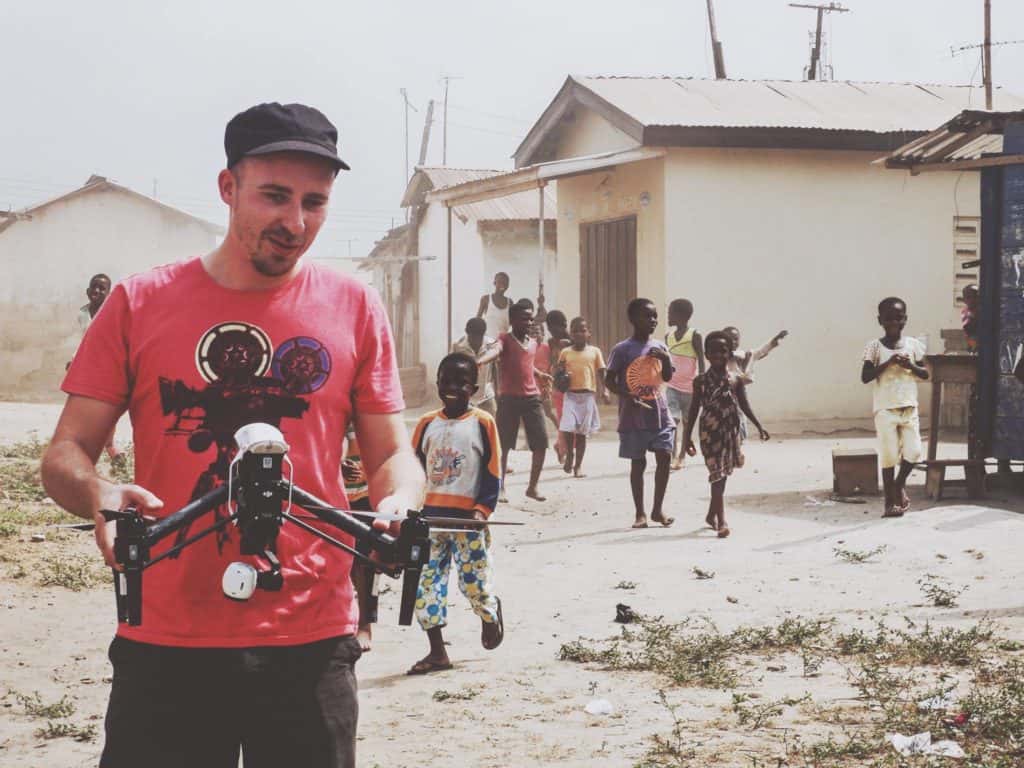At Chouette Films, we merge the worlds of academia and/or the third sector with the creative world in order to bring it to a wider audience. The unquestionable advantage of the medium of film lies in its accessibility. Films can speak on a variety of issues, ranging from humanitarian and environmental matters to social justice, to audiences of different backgrounds and ages in a way that academia, journalism or NGO jargon often does not. Film is also democratic and “by its very nature documentary film is a form of discourse which can only speak of the universal through the particular, and contrariwise, where the particular is liable to be read as a universal” (Chanan, 2007: 238).
It can therefore speak beyond the realm of statistic or theories and bring a level of humanity to news stories that surround us. In today’s world of ‘post-truth politics’, the role of documentary film, which brings empathy, understanding and compassion, is particularly vital. As emphasized by Chanan (2007: 16), whereas fiction movies “appeal directly to the spectator’s emotional and sentimental life, their private subjectivity – even when dealing with public, historical or political subjects (…), documentary speaks to the viewer as citizen, as a member of the social collective, as putative participant in the public sphere.” Therefore, using the medium of film can be especially useful in addressing young people.
Global Communities: Our City, Our Say from Chouette Films on Vimeo.
With our films, we aim to bring important issues to light and amplify the voices of those who might not otherwise be heard. But through our work in places ranging from remote African villages to the shantytowns of Latin American megacities, to cosmopolitan London, we quickly realized that despite the breadth of our work, the environmental footprint created by each of our productions was probably greater than any of the people we filmed would produce in their lifetime.
How could we possibly claim to make films about protecting the natural environment when we were causing so much harm to it with our film production? How could we talk about social justice when our own practices and choices were indirectly contributing to this inequality? As one interviewee in the film, ‘Racing Extinction’ said, “the worst thing you can make to the environment is to make a film about it.” Indeed, tons of energy is consumed at every stage of the production process; from lighting and filming to footage processing, transport and endless hours of human labour. In London alone, the industry produces the same amount of CO2 as a town of 20,000 people[1]. In addition to being so energy consuming, the film industry is also incredibly wasteful, with 95% of all props ending up in landfill[2]. We felt that in order to have integrity, especially in the eyes of the rural and urban poor with whom we often work, we had to significantly reduce the environmental footprint of our activities.
However, in order for our films to be green and create a sustainable film production eco-system, we could not just buy fancy, green technology but had to continue working in conventional, carbon-hungry ways. So we had to redesign our filmmaking ecosystem from the ground up and understand the nitty-gritty of sustainability in the simplicity of our daily choices. We considered everything, including using a PHEV car, solar powered batteries on location, LED lights, our supply chain (e.g. switching to a green electricity provider), and recycling and disposing of old equipment. But we also had to make changes to our lifestyle, the number of people we engage with in each production, and offsetting our carbon footprint by planting trees and building these ‘green’ principles even into the job description of our freelancers or when working with local crews, wherever possible.
The power of local radios in Africa, Ghana from Chouette Films on Vimeo.
In a way, we learned to expand ‘internally’ rather than ‘externally’ – and became multi-skilled in order to keep costs down and our environmental impact low. We learned that being green requires a great degree of dedication and commitment. This was – and to some extend still is – our challenge and often it can be slightly awkward and time-consuming, for example when we travel by land rather than air in order to reduce our carbon footprint; or when we choose not to consume produce that is not locally grown. However, as we keep intertwining these principles into Chouette Films, it seems that these changes start coming to us naturally and our passion for being sustainable grows with our new habits.
However, we also realise we can never be ‘100% green’, and that all our activities – no matter how hard we try – have a carbon footprint, and often it is simply a matter of choosing the lesser evil. Luckily, as BAFTA’s Albert Affiliates, we are able to monitor and measure our carbon footprint via Albert the green calculator for sustainable TV and film production, so that with each production we keep raising the bar higher. We are also fortunate to have a green mentor, Caron Johnson from the Eden Project, who helps us to continue redefining our thinking about sustainability. Whatever steps we make, no matter how small, can have a massive impact – whether it is people we work with in Bangladesh who struggle with rising sea levels, or those facing droughts in sub-Saharan Africa. In our interconnected world, sustainability is about working together, especially in light of political adversities.

Producer Patrick Cassavetti suggested that creativity in filmmaking “lies in making the best of what you’ve got. That is the art. It’s about having a small amount of money or a large amount of money and doing the best you can while wasting as little as possible” (Petrie, 1991: 153). This statement could not be truer for us at Chouette Films. Furthermore, another producer, Marc Samuelson, said, “the thing to try and do is to make a film that looks and feels like it’s a much bigger budget than it actually is” (Petrie, 1991: 153). Indeed, both statements resonate particularly well with our work ethics at Chouette Films. In all our productions, we never compromise on quality and always combine our creative talent with a range of green tech solutions and various sustainable practices to deliver the best we possibly can.
Being mindful of economic and environmental aspects of film development could be seen as a constraint in itself, but we prefer to see these ‘constraints’ as sources of creativity. And this is how our ‘green’ resource-efficient business model came about. It is built on finding a balance between the three pillars of sustainability and safeguarding Chouette Films’ social, economic and environmental resources and impacts. Sustainability is intertwined into all aspects of our work so that producing high-quality, powerful but affordable films for social change can be feasible. Sustainable film production might no longer seem like an impossible dream, as we encourage and train the new generation of socially conscious young ‘green’ filmmakers.
[1] Source: Greening Film
[2] Source: Scenery Salvage







